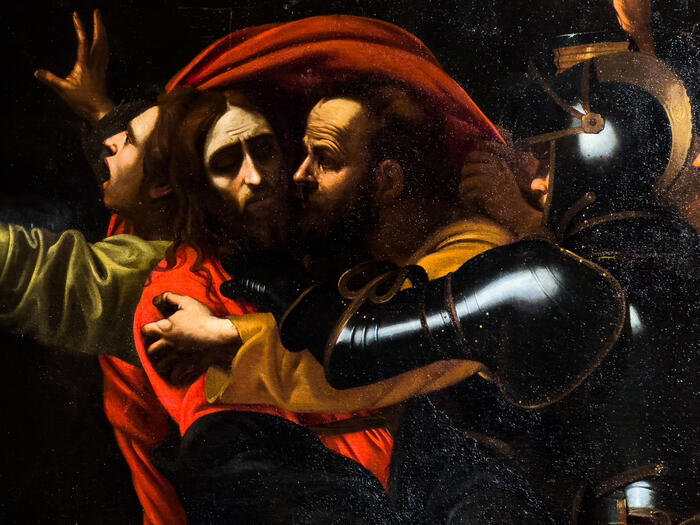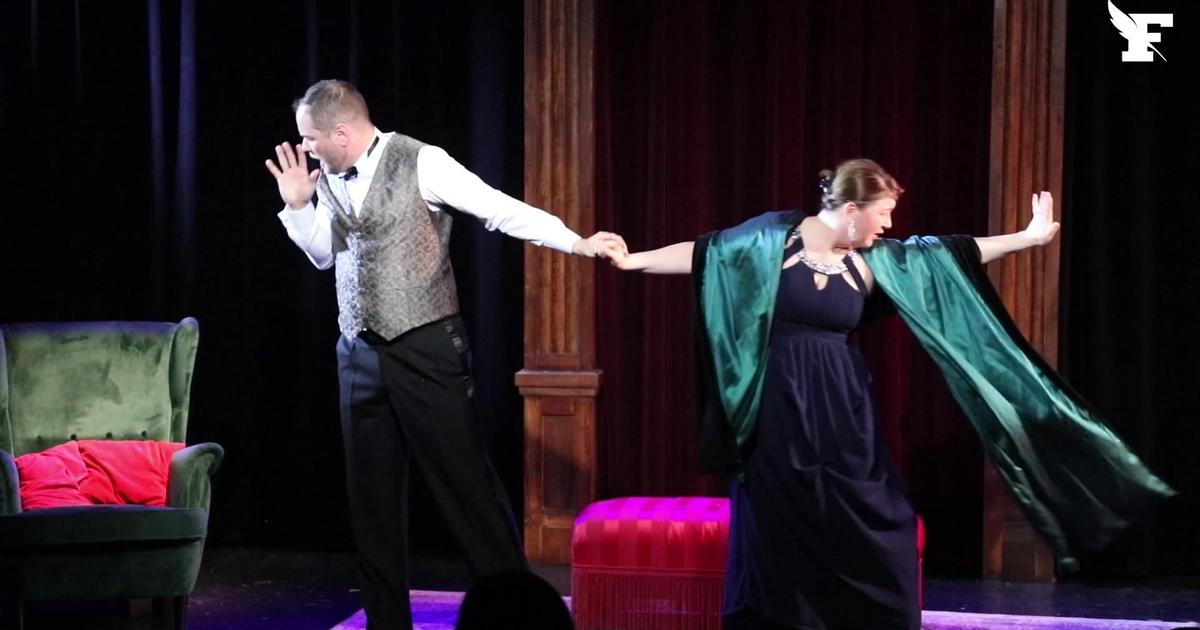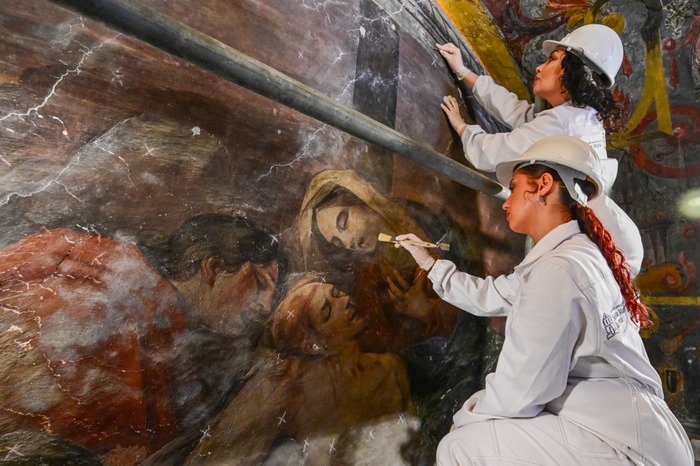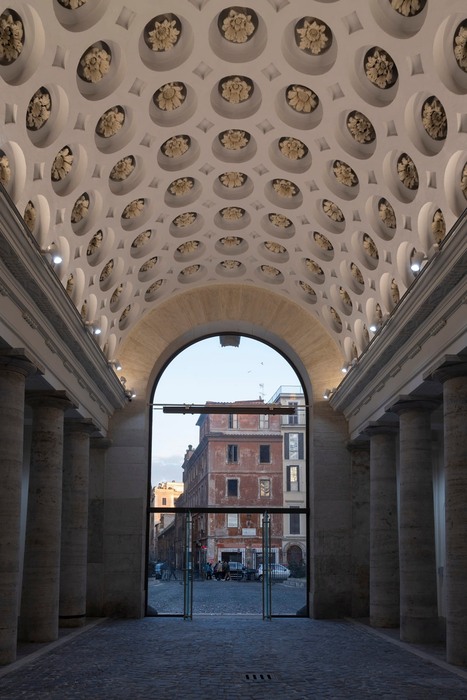Detail of the portrait of Evaristo Pérez de Castro that Goya painted, guarded in the Louvre.Département des Peintures / EL PAÍS
An eccehomo of Michelangelo Merisi de Caravaggio (1571-1610), the brilliant, murderous and heartless painter who was always involved in fights, left Italy in 1656. The Count of Castrillo, viceroy of Naples, brought him to Spain. A growing number of experts believe it is the same painting that appeared at an auction in Madrid this month. The Academy of Fine Arts of San Fernando also considers that it is the canvas that appeared in its inventory in 1817 and that was exchanged for an
Alonso Cano
in 1823 by the liberal politician and diplomat Evaristo Pérez de Castro, whose descendants have been identified as the owners of the painting. that has been around the world these weeks. Does that show that it is the mythical
caravaggio
What a legion of ancient painting experts have been searching for decades?
As always happens with the genius of the Baroque, it is difficult to know: the history of the work is full of gaps, mysteries and nooks and crannies.
More information
The supposed 'caravaggio' belongs to the Pérez de Castro family, with a great artistic and political tradition
The Academy of Fine Arts gave the Pérez de Castro family a 'caravaggio' like the current one in 1823
Itziar Arana, coordinator of the Centro de Estudios R + D + I of the Academia de San Fernando, has investigated that exchange of 1823, exceptional also because it is the only one of which there is evidence in the archives at the Academy, and for which Pérez de Castro, an art collector who was portrayed by Goya (the painting now belongs to the Louvre Museum), clearly lost out: Caravaggio was a very little appreciated painter and Alonso Cano, on the other hand, was highly valued.
It mattered little to Pérez de Castro, a collector with a very definite taste, although eccentric for the time: religious and somewhat dark painting.
Time ended up proving him right.
It is the only exchange of which there is evidence in the archives of the institution
After learning the story of the possible
caravaggio
that was going to be auctioned in Madrid, Arana began to connect the dots. And when the news broke on Thursday night that the owners of the painting were the Pérez de Castro family, his doubts were cleared and he warned those responsible for the Academy of Fine Arts, who issued a statement on his Facebook page.
"We still don't know how it gets to the Academy," explains Itziar Arana. "But two and two are four: it has to be the
caravaggio
that was hanging in our rooms," continues this researcher, who had already published an article in 2013 about that artistic exchange. In the 1817 catalog, the first reference to the work, it appears in entry 251 as "The eccehomo with two sayones, by Carabaggio." In the 1821 catalog the same formula is repeated. In a previous investigation in 1999, the archivist Esperanza Navarrete already made reference to the work. It was a forgotten painting, but not lost: surely because Caravaggio was a rather unappreciated painter until 1951, when Roberto Longhi rescued him in a large exhibition in Milan, nobody gave him due importance.
"Until the name of the Pérez de Castro family emerged, we had no assurance that the painting that had appeared at the Ansorena auction was the same as the one referred to in the 1823 agreement," says Jaime Pérez de Armiñán, deputy director of the Academy.
Right now, the institution is carrying out an investigation, led by Itziar Arana, to try to discover how I got to its rooms.
"There are three fundamental possibilities: from the Jesuit convents suppressed in the 18th century, the transfer of an academic or the so-called 'kidnapping of Godoy's assets', when Fernando VII seized all of his properties in 1808."
'Ecce homo' removed from the Casa Ansorena auction in Madrid.
However, in his 2013 article, Arana revealed that in the report he made for the 1823 swap, the academic José de Arnedo pointed out: “I don't know where the eccehomo came from, because in the inventory of the paintings collected in Don's house Manuel de Godoy does not have a painting as large as the one that the
caravaggio
has
”. The Academy also wants to make it clear that the trade-in was legal and that it has no intention of making any claim on the painting.
What happened to the painting afterwards? The heirs of Pérez de Castro have refused to speak with this newspaper, although the fact that for 198 years there was no more news of the work invites us to think that it continued in the family until it came out with a ridiculous price of 1,500 euros in a catalog of Ansorena in March. Nor did it emerge when, after the enactment of the current Heritage Law in 1985, owners were encouraged to declare artistic heritage assets.
But who was Evaristo Pérez de Castro (1769-1849)? He was at the center of the convulsed politics of the Spanish 19th century from the French occupation - he was sent to Bayonne on secret missions to receive instructions from the royal family - until the approval of the first Constitution that enshrined the sovereignty of the people over that of the king. Due to his liberal profile, he was persecuted during the years of the absolutism of Fernando VII and was forced into exile on two occasions.
"Many liberals were patrons and protectors of the arts, that was a factor of prestige," explains Carlos III University professor Carlos Rodríguez López-Brea, author of the entry dedicated to Pérez de Castro in the Dictionary of the Royal Academy of the history. "Being a moderate liberal in his later days, diplomat, Elizabethan, senator, Her Majesty's prime minister ... rich, I have little doubt that he must have been a collector," continues this researcher.
The history before 1817 of this eccehomo is also lost in the fog that usually surrounds the work of the quarrelsome Milanese painter, although many experts agree that it must be the same one that the Count of Castrillo brought to Spain in 1656. The viceroy had bought in Naples another painting by the painter, an
alomé
, currently exhibited in the Royal Palace and which was authenticated by Longhi in the twenties of the last century.
Many of the documents that report on Caravaggio's life are judicial, given the artist's criminal record.
José Antonio de Urbina, director of the Caylus gallery and specialist in historical collecting, has well-founded suspicions that it is a painting that appears for the first time when, after Prudentia Bruni's complaint for non-payment of rent and various damages, the Caravaggio's estate.
A document dated 1605 already speaks of "three small paintings".
When the painter killed Ranuccio Tomassoni in 1606, he was forced to flee to Naples and took some works, probably the small ones.
Facade of the house where Evaristo Pérez de Castro lived in Cádiz.Alberto Ramos / EL PAÍS
In an inventory of the assets of the diplomat Juan de Lezcano, in 1631, an eccehomo by Caravaggio appears, and also in another inventory of the Count of Castrillo, from 1657. The document, which is kept in the archive of the Count of Orgaz (both titles were merged) and that José Antonio de Urbina has consulted, he speaks of an eccehomo "of five spans with a frame", the equivalent of one meter thirty, a size that closely corresponds to the painting that emerged in Madrid. The Academy's research also points to the same picture.
However, Massimo Pulini, a painter and art teacher, who was commissioned to investigate the painting and who drew up a detailed report, maintains that the work was painted in 1605 in Rome, commissioned by Cardinal Massimo Massimi. It alludes to documentation that could prove that Caravaggio promised to paint an eccehomo for the cardinal on that date. And he points out that, to reach this conclusion, he has also taken into account that a close relative of Cardinal Massimi, Monsignor Innocenzo Massimi, was appointed apostolic nuncio in Madrid in 1623 and could be the intermediary for the work to reach the Spanish capital, but in this case "certainly not the day after its completion."
On the other hand, the researcher Rossella Vodret, a renowned expert on the Baroque master, believes that due to the size of the work it is difficult to fit it into the Massimi collection, since the cardinal's inventory speaks of a “large painting”, a description that does not coincide with the dimensions of the Madrid canvas. "It is only 111 cm tall, so objectively it cannot be called 'big'", he indicates in an interview collected by the specialized publication
Finestre sull'arte
.
He also points out that it comes from the collection of the Count of Castrillo, who was viceroy of Naples between 1653 and 1659. “We know, from an inventory of his collection of 1657, that he possessed two original paintings by Caravaggio: a Salomé (the one found in the Royal Palace of Madrid), and an eccehomo with a soldier and Pilatos that measured five feet, a size very close to that of this painting ”, says the scholar.
At the center of the turbulence of the XIX
Evaristo Pérez de Castro was at the center of the convulsive politics of the 19th century from the French occupation - he was sent to Bayonne on secret missions to receive instructions from the royal family - until the approval of the first Constitution that enshrined the sovereignty of the people over the King. Elected deputy for Valladolid, he had a prominent role in the Cortes of Cádiz from the beginning. In the first meeting held on September 24, 1810, he was elected secretary of the Cortes and he was also one of the 13 members of the commission in charge of drafting the Constitution, according to Alberto Ramos, professor of Contemporary History at the University of Cádiz. "He is one of the most interesting, active and curious deputies," says Ramos, a specialist in the Cortes of Cádiz. For its liberal profile,Pérez de Castro was persecuted during the years of the absolutism of Fernando VII and was forced into exile on two occasions. The historian recalls that he had a prominent role in defending the freedom of the press law, which came into force in November 1810 and which put an end to the censorship prior to the publication of texts. Later he held numerous public positions (minister of state, consul and president of the Council of Ministers, "increasingly moderate and filo-absolutist", according to the Biographical Dictionary of Spain (1808-1833), by Alberto Gil Novales. "He married with María Dolores, from the house of the Marquises of Valladares, with whom she passed through Bayonne in September 1826, on the way to Bagnèeres de Luchon, "says the biographer. She returned to Spain after the death of Fernando VII in 1833." Aviraneta,in a letter of 1840, he maliciously says that Mrs. Pérez de Castro's favorite is Fernando Collado. "He wrote 'A correspondence between Godoy and Queen María Luisa' in 1814 under the pseudonym OZO













/cloudfront-eu-central-1.images.arcpublishing.com/prisa/S7ERVSCT4FUVX6R7TUVBDNTH5Y.jpg)
